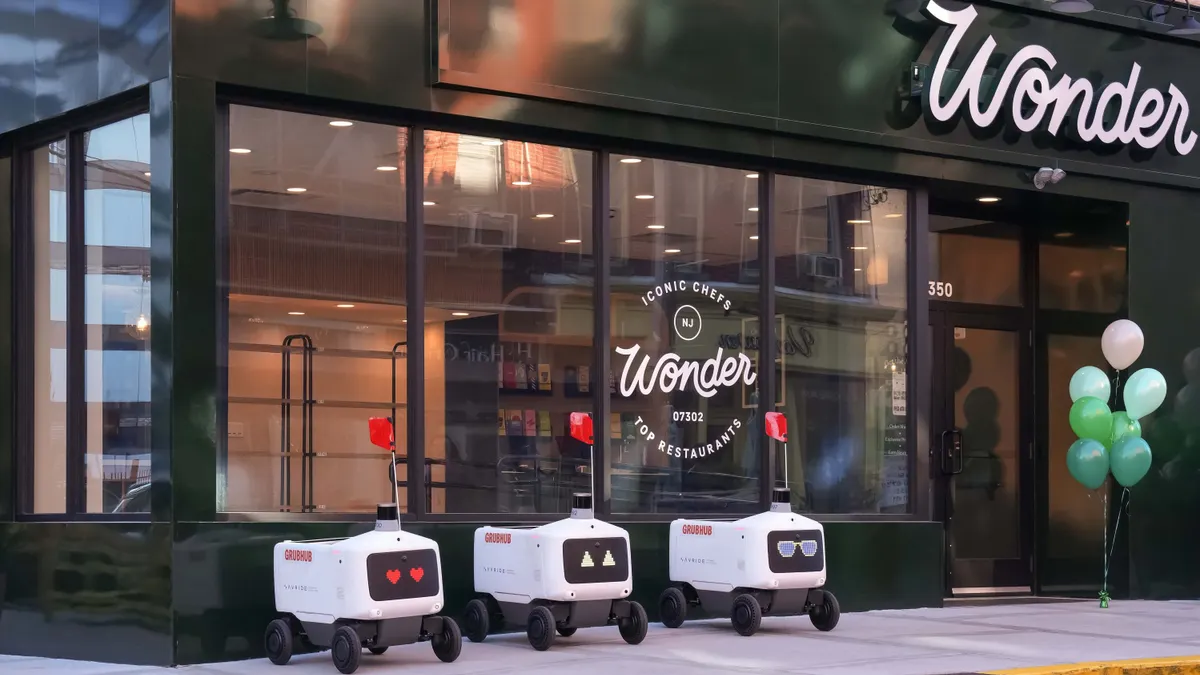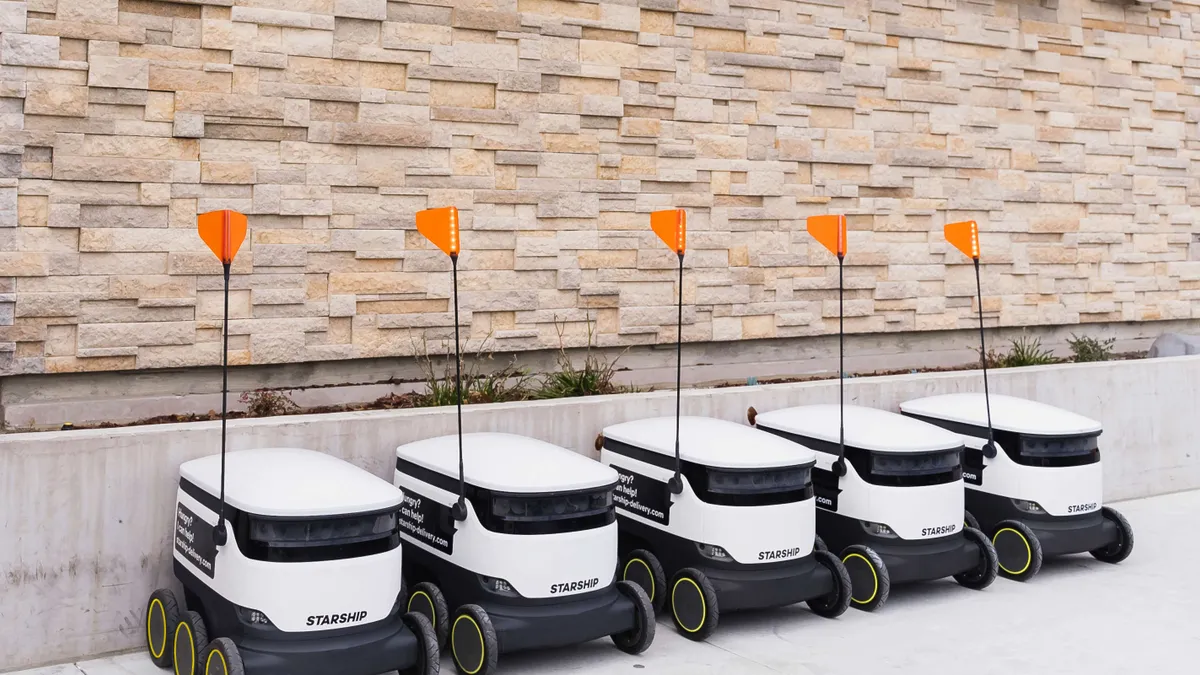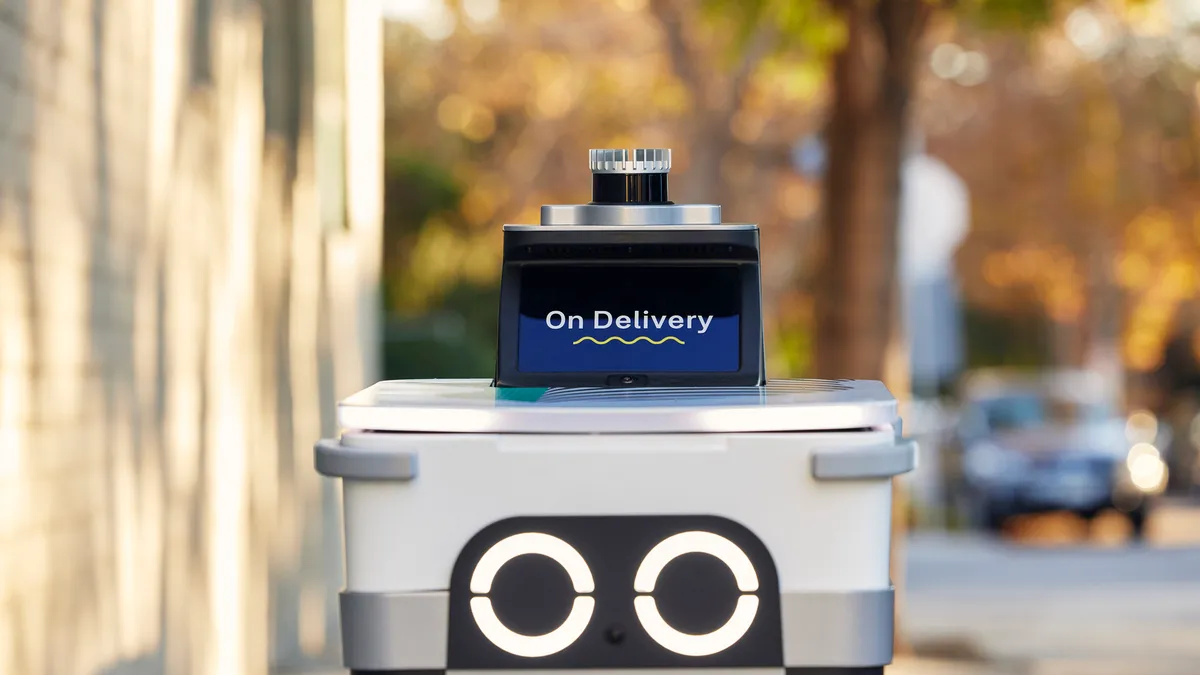Despite growing demand for delivery, operators have become increasingly concerned that third-party platforms are taking too big a bite out of their already thin margins.
Late June, independent operators took aim at Grubhub specifically, accusing the third-party provider of cybersquatting and registering 23,000 domain names without their permission to profit off of restaurant's businesses. A recent New York City Council meeting also examined accusations of hidden fees imposed by Uber Eats and Grubhub when customer phone calls didn't result in orders.
Grubhub has since defended itself, calling the charges of cybersquatting "reckless" and claiming its restaurant partners had agreed to the domain purchases and websites in their contracts as part of marketing their businesses, according to the Los Angeles Times.
"Allegations that Grubhub engages in cybersquatting or any other behavior that would harm our restaurants are absolutely false," Grubhub Senior Manager, Corporate Communications Katie Norris told Restaurant Dive in an email. "In the past, we have registered domain names and created websites as a way for restaurants to drive more online orders. In every case, restaurants gave us explicit permission to do this, and we have always given restaurants the ability to assume control of any domain created for them."
Norris said Grubhub stopped setting up microsites for restaurants in 2018, but didn’t indicate why they did so. The company remains committed to driving more orders for restaurants in its marketplace, she said.
"The question I have is why is all this bubbling up now when Grubhub [as Seamless] has been operating in New York for 20 years," BTIG Managing Director and Restaurant Analyst Peter Saleh told Restaurant Dive. "My gut tells me it's because digital orders were a very small percentage of sales ... years ago and it is now more meaningful."
Scrutiny over third-party aggregators will likely intensify, especially as delivery’s growth outpaces overall restaurant industry sales, and operators work out the kinks with delivery. Non-pizza delivery increased 63% in the last five years ending March 2019, NPD Group Vice President, Food Industry Advisor David Portalatin told Restaurant Dive. Comparatively, visits to restaurants have grown 1% during this time, he said.
"Consumers are voting with their wallet and saying, 'we value delivery'," Portalatin said.
As restaurants watch delivery sales grow, they also are seeing how much delivery providers are taking off the top from each transaction, Saleh said.
"There is a prize out there and everyone is going to have to share in that prize," Portalatin said. "Aggregators are going to have to have a revenue stream, too."
"The question I have is why is all this bubbling up now when Grubhub [as Seamless] has been operating in New York for 20 years. My gut tells me it's because digital orders were a very small percentage of sales ... years ago and it is now more meaningful."

Peter Saleh
Managing Director and Restaurant Analyst, BTIG
Despite discontent from partner restaurants, Saleh said he doesn't anticipate any major shift in Grubhub's operations.
"This may be a bump in the road and not a massive mountain [Grubhub] has to climb," Saleh said.
The claims of cybersquatting likely stem from restaurants not understanding what Grubhub's services include, which entails creating a digital presence, Saleh said.
To resolve issues surrounding phone orders, Grubhub's algorithm may need to be tweaked to make sure restaurants aren’t charged for phone calls that don't result in an order, Saleh said.
"I think it's a little unfair that people see Grubhub as a bad actor or bad citizen in this," ShiftPixy CEO Scott Absher told Restaurant Dive. ShiftPixy, which offers a scheduling and recruiting platform, has been building out a platform to assist restaurants in self-delivery. "I can't imagine there being any bad intent. They are really trying to help these operators build their business."
He said Grubhub will likely be more communicative in explaining its tactics and methodologies and how they help these operators going forward.
"Our overall company mission is to be a true partner for restaurants," Norris said. "We provide restaurants with the tools to attract, retain, and maintain loyal, profitable customers. We are the marketing, technology, and in some cases the logistical partners that allow restaurants to focus on what they do best: making great food."
Grubhub allows restaurants to select which commission plan works best for them, which can include marketing and delivery, Norris said. For marketing, it generates demand for restaurants by promoting the restaurant to its 20 million diners to help generate orders, she said. The fees for marketing can range from 15% to 20% depending on what level of exposure the restaurant chooses, Norris said.
The provider's delivery fee is charged as a pass-through rate, and accounts for the costs related to delivery logistics and only applies to restaurants that use Grubhub's driver network. The fee for this service is 10% off the check. She said restaurants also have the option of doing delivery themselves to avoid delivery fees or only offer a pickup option through its platform.
It also offers a Restaurant Success Team that will work with restaurants to help design the menu, send photographers to take pictures of food, collaborate on promotions and work with restaurants to craft strategies to gain new customers, generate additional orders and garner more revenue, Norris said.
New partners and restaurants may ask more questions before they sign on to the service, Saleh said. But many independent operators will still have to partner with third-party platforms to build out delivery sales since they just don't have the experience, time or capital to do it themselves, he said.
"I can't imagine there being any bad intent. They are really trying to help these operators build their business."

Scott Absher
CEO, ShiftPixy
Better assessments of whether or not delivery works for that specific restaurant will also be needed. Delivery doesn't work for every restaurant and every cuisine either, and there have been restaurants opting out of delivery because the margins don’t work or it’s not a fit for the restaurant in general, Saleh said.
A handful of branded operators, such as Olive Garden, are building up carryout instead. And with good reason.
Digitally ordered carryout’s growth has been even more staggering and can provide a way to work around data and cost issues that come with delivery, Portalatin said. Carryout grew 268% over the last five years, he said. This off-premise strategy avoids subsidizing the cost of delivery to instead have a digital application where consumers place an order for pickup, he said.
"They are getting a faster order, better order accuracy, better customer service and go and pick it up at the restaurant themselves," Portalatin said.
Solving delivery's sticking points
For restaurants sticking with third-party delivery, many are trying to work through the bugs since the segment is still in its nascent stages, Absher said.
While providers collect data and can use it to help restaurants figure out ways to boost sales, these aggregators also use it to grow their own business, Portalatin said.
"For small, independent restaurants, it's a simple reality that [third-party aggregators] are your partner and your competitor at the same time," Portalatin said.
Many large brands that still work with third-party delivery operators are also dealing with issues related to data and the overall delivery experience, Absher said. After spending millions, if not billions, to create a branded experience, much of that experience is often lost with third-party delivery, he said.
"Why would they suddenly decide to surrender their brand, their customer experience and customer data to a kid in a red golf shirt and cap?"Absher said.
"For small, independent restaurants, it's a simple reality that [third-party aggregators] are your partner and your competitor at the same time."

David Portalatin
Vice President and Food Industry Advisor, NPD Group
Third-party operators could also use the data on consumer preference to suggest menu additions for operators, while franchised operators would lose out on that opportunity of menu adaptations, Absher said. Franchisees have less flexibility when it comes to menus and pricing because those decisions are often made at the corporate level, he said. Independent operators, on the other hand, have more flexibility, he said.
In-house is quickly becoming a workaround, especially for large companies that have the capital to build up this platform. This creates a separation between independent operators that have to work with third-party and large operators that provide their own delivery, Absher said.
Third-party operators are also looking into ways to better share data and offer white-label solutions where restaurants can keep their branding, such as Grubhub's partnership with Taco Bell and DoorDash's partnerships with Denny's and Chipotle. These solutions offer restaurants the ability to build delivery within their branded websites and app, integrate with POS systems while having access to the third-party’s delivery fleet.
The challenge of pricing
Delivery fees and costs also have been a point of frustration for operators. These costs have been largely subsidized, especially by investors, and many providers have yet to make money, Portalatin said.
"This can't be subsidized by investors forever," Portalatin said.
A few years ago, delivery was lauded as having a 20% to 40% incremental rate, so many operators jumped in the game and planned to figure out the details later, Absher said. One of the immediate results was that it became difficult for franchisees to make a profit when they were giving up 30% of the ticket, and couldn’t adapt menu pricing to reflect that.
"It created a wedge early on," Absher said.
This discord has already led to some changes among large operators. McDonald's, for example, has been renegotiating its contract with Uber Eats amid criticism that the service has been unprofitable for franchisees.
To solve issues with costs, prices for delivery menus will have to rise, Saleh said. With consumers willing to pay for the convenience of having food delivered, restaurants should consider charging different prices for delivered food versus dine-in food.
And many large chains have already started to do so.
Papa John's, which has been working with aggregators, has a higher price for food ordered through these sites, Saleh said. Wendy's, Taco Bell and Del Taco are starting to rise prices for delivery, Saleh said.
The Habit Burger, which has been late to the delivery game, also set up its online menu at higher prices to reconcile the difference initially, Absher said.
Adapting delivery menu pricing also allows operators to maintain a delivery operation without having to invest in the infrastructure of building it out themselves, he said.
"Keep an eye on the pricing strategies for these operators," Absher said. "As they start adapting their pricing strategy, I think a lot of those tensions will dissipate."



















